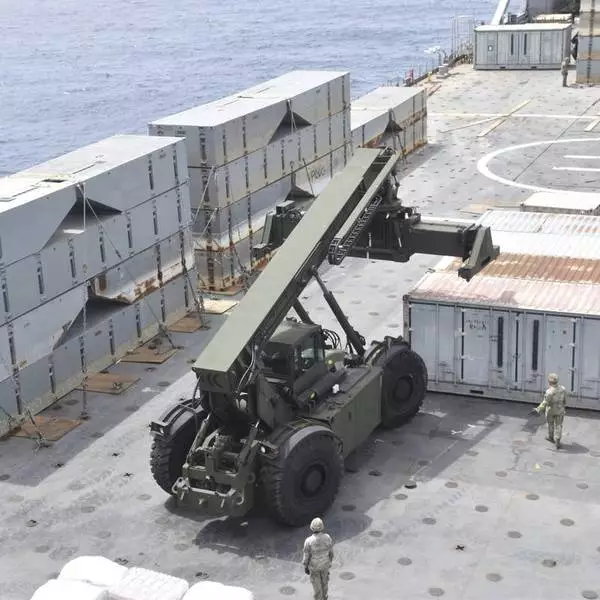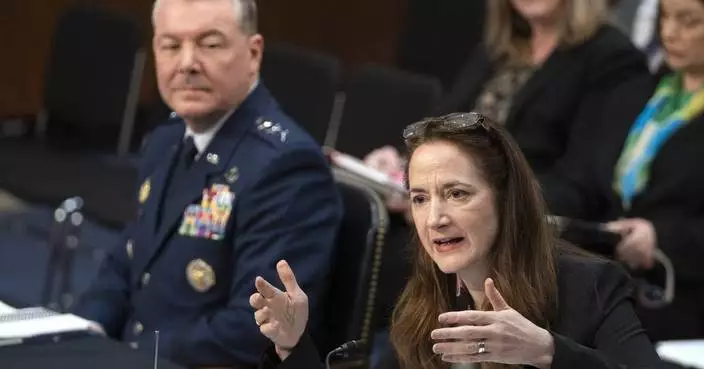A common denominator runs through the impeachment probe and the chaos unfolding in Syria: President Donald Trump's improvisational style of conducting foreign policy.
The president's decision to push Ukraine to investigate a political rival prompted Democrats to launch the House impeachment inquiry, and Trump's critics equate his abrupt decision to pull U.S. troops out of northern Syria with throwing a match on a powder keg.
Both actions reflect an increasingly confident Trump's inclination to listen to his gut over his foreign policy and national security advisers, a proclivity that is rattling U.S. allies and emboldening enemies. Where Trump believes that standing up to the foreign policy establishment holds appeal for voters in next year's election, his critics see him gambling with U.S. national security and making America's word worthless on the global stage.
Trump's response has been to dig in his heels, despite bipartisan criticism on both counts.
The president says he did nothing wrong on the July 25 phone call with Ukrainian President Volodymyr Zelenskiy that is now at the heart of the impeachment inquiry — a conversation that set off alarm bells throughout his foreign policy apparatus.
In the call, Trump urged Zelenskiy to investigate a firm tied to political rival Joe Biden's son Hunter and to look into Ukraine's own involvement in the 2016 presidential election. Trump staffers expressed concern that he was misusing his presidential authority in making the request and White House lawyers ordered that a memorandum documenting the call be moved into a computer network typically used for covert operations to keep it under wraps.
On Syria, Trump insists he understands the situation "better than most." He argues that America should not be the world's policeman — but admitted over the weekend that "now I'm sort of an island of one" on his decision to withdraw troops from northern Syria.
Indeed, the House delivered a bipartisan and overwhelming rebuke Wednesday of Trump's withdrawal of American forces, voting 354-60 to condemn the action.
The president is taking a backwards approach to policymaking, in the view of foreign policy experts.
Instead of listening to his advisers, then making a decision, Trump does the reverse.
In the case of Syria, Trump talked to Turkish President Recep Tayyip Erdogan on the phone and warned him against launching an offensive against Kurdish forces. Turkey views them as terrorists, but they were America's ally on the battlefield against Islamic State militants.
After warning Erdogan that he would pull the trigger on economic sanctions, Trump announced that he was pulling U.S. forces out of Syria. The Kurds felt abandoned. IS fighters that Kurds were guarding escaped from detention. Iran, and Russia saw a green light to amass more influence in the region.
"It's a complete debacle," said Mark Dubowitz, who has advised the Bush, Obama and Trump administrations and lawmakers on U.S. foreign policy.
"He keeps doing the same thing — making decisions without advisers — and then everybody has to scramble to mitigate the damage," Dubowitz said. He cited Treasury Secretary Steven Mnuchin's rush to craft new sanctions against Turkey and the president's decision to dispatch Vice President Mike Pence and Secretary of State Mike Pompeo to the region to mediate.
Trump, for his part, sees his approach to Turkey and Syria as "strategically brilliant."
It also dovetails nicely with his campaign pledge to bring American troops home from what he calls never-ending wars. He has told aides that the chants of "Bring them home!" from his rally crowds, including one in Minnesota earlier this month, are evidence that the decision is popular with his base supporters.
Republican Sen. Lindsey Graham of South Carolina, typically one of the president's strongest allies on Capitol Hill, says the president is "not listening."
"This decision and line of thinking is against all sound military advice," Graham said. "No one in his national security team believes that Turkey's invasion of Syria is of no consequence to us."
On Ukraine, meanwhile, Trump and his personal attorney, Rudy Giuliani, did an end-run around the formal diplomatic circles in Ukraine, asking Kyiv to investigate the Bidens. Trump listened to Giuliani instead of seasoned diplomats. Former White House aide Fiona Hill testified that then-national security adviser John Bolton was so alarmed by Giuliani's back-channel activities in Ukraine that he described him as a "hand grenade who is going to blow everybody up."
There's little sign that any of the criticism on either Ukraine or Syria has caused Trump to rethink his approach. In fact, he sees political gold in both. He seemed to conflate the two issues when he lashed out Wednesday and called House Speaker Nancy Pelosi a "third-rate politician."
"I think we're going to take the House, based on what's happening with the impeachment stuff," he told reporters earlier in the day.
He was equally bullish on the politics of pulling troops out of foreign entanglements.
"I won an election based on that, and that's the way it is," he said. "Whether it's good or bad, that's the way it is."
EDITORS' NOTE: Deb Riechmann has written for The Associated Press domestically and abroad for more than 30 years.
WASHINGTON (AP) — The U.S. military finished installing a floating pier for the Gaza Strip on Thursday, with officials poised to begin ferrying badly needed humanitarian aid into the enclave besieged over seven months of intense fighting in the Israel-Hamas war.
The final, overnight construction sets up a complicated delivery process more than two months after U.S. President Joe Biden ordered it to help Palestinians facing starvation as food and other supplies fail to make it in as Israel recently seized the key Rafah border crossing in its push on that southern city on the Egyptian border.
Fraught with logistical, weather and security challenges, the maritime route is designed to bolster the amount of aid getting into the Gaza Strip, but it is not considered a substitute for far cheaper land-based deliveries that aid agencies say are much more sustainable. The boatloads of aid will be deposited at a port facility built by the Israelis just southwest of Gaza City and then distributed by aid groups.
Heavy fighting between Israeli troops and Palestinian militants on the outskirts of Rafah has displaced some 600,000 people, a quarter of Gaza’s population, U.N. officials say. Another 100,000 civilians have fled parts of northern Gaza now that the Israeli military has restarted combat operations there.
Pentagon officials said the fighting in Gaza wasn’t threatening the new shoreline aid distribution area, but they have made it clear that security conditions will be monitored closely and could prompt a shutdown of the maritime route, even just temporarily. Already, the site has been targeted by mortar fire during its construction and Hamas has threatened to target any foreign forces who “occupy” the Gaza Strip.
The “protection of U.S. forces participating is a top priority. And as such, in the last several weeks, the United States and Israel have developed an integrated security plan to protect all the personnel," said Navy Vice Adm. Brad Cooper, a deputy commander at the U.S. military's Central Command. "We are confident in the ability of this security arrangement to protect those involved.”
U.S. troops anchored the pier at 7:40 a.m. local time Thursday, the military's Central Command said, stressing that none of its forces entered the Gaza Strip and would not during the pier's operations.
“Trucks carrying humanitarian assistance are expected to begin moving ashore in the coming days,” the command said. “The United Nations will receive the aid and coordinate its distribution into Gaza.”
The World Food Program will be the U.N. program handling the aid, officials said.
Israeli forces will be in charge of security on the shore, but there are also two U.S. Navy warships near the area in the eastern Mediterranean Sea, the USS Arleigh Burke and the USS Paul Ignatius. Both ships are destroyers equipped with a wide range of weapons and capabilities to protect American troops off shore and allies on the beach.
Israeli military spokesman Lt. Col. Nadav Shoshani confirmed that the pier had been attached and that Israeli engineering units had flattened ground around the area and surfaced roads for trucks.
“We have been working for months on full cooperation with (the U.S. military) on this project, facilitating it, supporting it in any way possible,” Shoshani said. “It’s a top priority in our operation.”
Aid agencies say they are running out of food in southern Gaza and fuel is dwindling, which will force hospitals to shut down critical operations and halt truck deliveries of aid. The U.N. and others have warned for weeks that an Israel assault on Rafah would cripple humanitarian operations and cause a disastrous surge in civilian casualties.
More than 1.4 million Palestinians — half of Gaza’s population — have been sheltering in Rafah, most after fleeing Israel’s offensives elsewhere.
The first cargo ship loaded with 475 pallets of food left Cyprus last week to rendezvous with a U.S. military ship, the Roy P. Benavidez, which is off the coast of Gaza. The pallets of aid on the MV Sagamore were moved onto the Benavidez. The Pentagon said moving the aid between ships was an effort to be ready so it could flow quickly once the pier and the causeway were installed.
The installation of the pier several miles (kilometers) off the coast and of the causeway, which is now anchored to the beach, was delayed for nearly two weeks because of bad weather. The sea conditions made it too dangerous for U.S. and Israeli troops to secure the causeway to the shore, U.S. officials said.
Military leaders have said the deliveries of aid will begin slowly to ensure the system works. They will start with about 90 truckloads of aid a day through the sea route, and that number will quickly grow to about 150 a day. But aid agencies say that isn't enough to avert impending famine in Gaza and must be just one part of a broader Israeli effort to open land corridors.
Because land crossings could bring in all the needed aid if Israeli officials allowed, the U.S.-built pier-and-sea route “is a solution for a problem that doesn’t exist,” said Scott Paul, an associate director of the Oxfam humanitarian organization.
Biden used his State of the Union address on March 7 to order the military to set up a temporary pier off the coast of Gaza, establishing a sea route to deliver food and other aid. Food shipments have been backed up at land crossings amid Israeli restrictions and intensifying fighting.
Under the new sea route, humanitarian aid is dropped off in Cyprus where it will undergo inspection and security checks at Larnaca port. It is then loaded onto ships — mainly commercial vessels — and taken about 200 miles (320 kilometers) to the large floating pier built by the U.S. military off the Gaza coast.
There, the pallets are transferred onto trucks, driven onto smaller Army boats and then shuttled several miles (kilometers) to the floating causeway, which has been anchored onto the beach by the Israeli military. The trucks, which are being driven by personnel from another country, will go down the causeway into a secure area on land where they will drop off the aid and immediately turn around and return to the boats.
Aid groups will collect the supplies for distribution on shore, with the U.N. working with the U.S. Agency for International Development to set up the logistics hub on the beach.
Sabrina Singh, Pentagon spokeswoman, told reporters that the project will cost at least $320 million, including the transportation of the equipment and pier sections from the United States to the coast of Gaza, as well as the construction and aid delivery operations.
Associated Press writers Jon Gambrell in Dubai, United Arab Emirates, and Julia Frankel in Tel Aviv, Israel, contributed to this report.

US military says Gaza Strip pier project is completed, aid to soon flow as Israel-Hamas war rages on

US military says Gaza Strip pier project is completed, aid to soon flow as Israel-Hamas war rages on

In this image provided by the U.S. Army, soldiers assigned to the 7th Transportation Brigade (Expeditionary) and sailors attached to the MV Roy P. Benavidez assemble the Roll-On, Roll-Off Distribution Facility (RRDF), or floating pier, off the shore of Gaza on April 26, 2024. The U.S. expects to have on-the-ground arrangements in Gaza ready for humanitarian workers to start delivering aid this month via a new U.S.-backed sea route for Gaza aid. An official with the U.S. Agency for International Development tells the AP that humanitarian groups expect to have their part of preparations complete by early to mid-month. (U.S. Army via AP)












